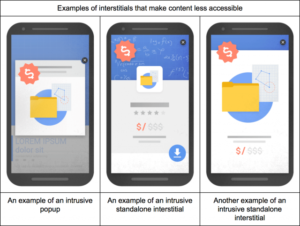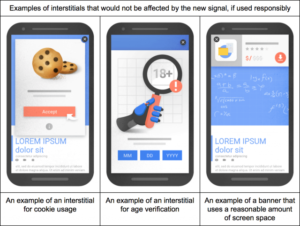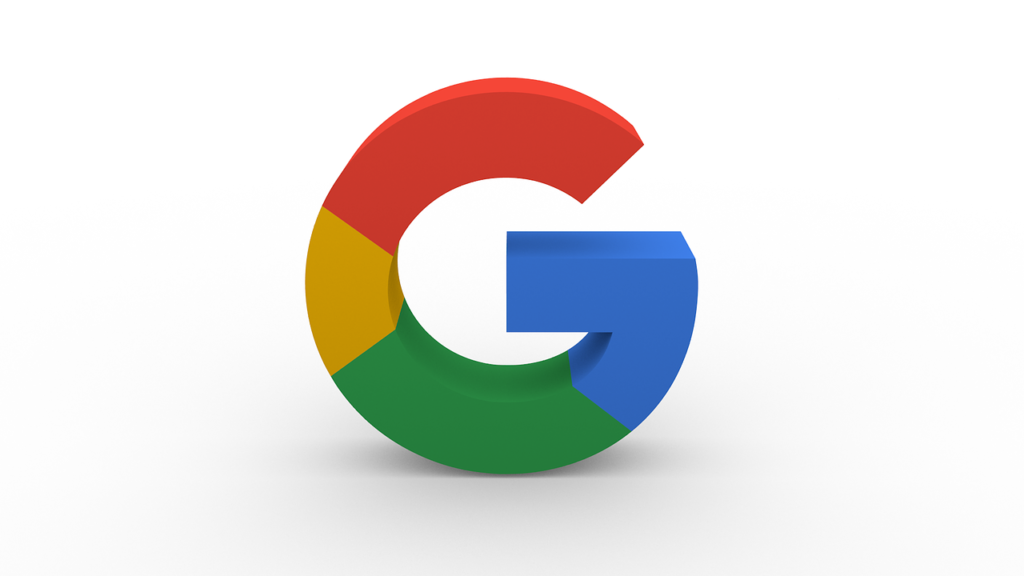Have you ever clicked through to a website on Google only to be greeted by an annoying ad that takes up your phone’s entire screen? Have you ever become so fed up with the difficulty of removing the ad that you decided to leave the site? Well, then you have experienced the frustrations that can come with the use of interstitial ads. Interstitial ads are ads that pop up when you visit a site online. These ads often take over the home page of a website or mask the whole screen of your mobile device.
In a move many are calling long overdue, Google has taken significant steps to eliminate the presence of interstitial ads on sites reached through its search engine. Google has determined that interstitial ads disrupt the user experience when surfing the web in a mobile format. Google product manager Doantam Phan has explained, “Pages that show intrusive interstitials provide a poorer experience to users than other pages where content is immediately accessible. This can be problematic on mobile devices where screens are often smaller.” On January 10, 2017, Google introduced an algorithm that identifies intrusive interstitial ads and penalizes the pages they appear on by causing the pages to not rank as highly in Google search results. This punishment for the improper use of interstitial ads has been labeled as the “Intrusive Mobile Interstitial Penalty.”
The following types of interstitial ads will be penalized through Google’s new algorithm:
- Showing a popup that covers the main content, either immediately after the user navigates to a page from the search results, or while they are looking through the page.
- Displaying a standalone interstitial that the user has to dismiss before accessing the main content.
- Using a layout where the above-the-fold portion of the page appears similar to a standalone interstitial, but the original content has been inlined underneath the fold.

The following types of interstitial ads will not be penalized through Google’s new algorithm:
- Interstitials that appear to be in response to a legal obligation, such as for cookie usage or for age verification.
- Login dialogs on sites where content is not publicly indexable. For example, this would include private content such as email or unindexable content that is behind a paywall.
- Banners that use a reasonable amount of screen space and are easily dismissible. For example, the app install banners provided by Safari and Chrome are examples of banners that use a reasonable amount of screen space.

So, what does this ban mean for web users, digital advertisers and publishers? Most web users are incredibly happy that they will no longer have to deal with these annoying ads, but digital advertisers and publishers have been left scratching their heads. Many digital advertisers rely on interstitial ads to drive traffic to websites. These advertisers must decide whether to comply with Google’s new regulations by retiring the use of intrusive interstitial ads, or face a decreased ranking in Google’s search results, which could be way more damaging to the amount of web traffic their websites receive. Going forward, the best option for advertisers is to stop using intrusive interstitial ads and focus their efforts on thinking of alternative, creative ads that will not be as intrusive. On the other side of the digital advertising business, Google’s new regulations will result in publishers taking a hit in decreased ad revenues. According to Rank Ranger, over $5.5 billion is spent globally on interstitial ads every year. Publishers will be sent scrambling for ways to lessen this financial blow, which could possibly lead them to demand more money from advertisers for other ad spaces.
Image 1 credit: Pixabay.com
Images 2 and 3 credit: Google

